If you thought solar panels produced energy in a form ready for direct use in your home, you got it wrong. Solar power inverters play a crucial role in the conversion of solar energy into usable electricity. As an integral part of any solar energy system, solar inverters are responsible for converting the direct current (DC) electricity generated by solar panels into alternating current (AC) electricity that can be used to power our homes, businesses, and communities. In this comprehensive guide, we’ll explore the basic principles, functionalities, and the different types of solar inverters available in the market. Whether you are considering installing a solar energy system or simply curious about the technology behind solar power, this guide will provide you with a complete understanding of solar inverters and their significance in harnessing clean, renewable energy.
At the heart of any solar power system lies the solar inverter, a device responsible for transforming the solar energy captured by panels into usable power for your household. But what exactly is a solar inverter, and why is it essential to your solar power system? A solar inverter primarily serves to convert direct current (DC) – aka the form of electricity generated by solar panels – into alternating current (AC), which is the form of power typically used by most household appliances and electrical systems. This conversion process is crucial as it allows the energy harvested by solar panels to be utilized within our homes or businesses.
Beyond its role as a power transformer, a solar inverter also serves as the main junction between the solar panel array and the home’s electrical distribution panel. It’s through this connection that the converted AC power is distributed throughout your home or fed back into the electrical grid, in case of grid-tied solar systems. Modern solar inverters are smart devices, embedded with advanced features. These inverters are equipped with switches allowing them to connect or isolate your solar system from the power grid based on your system’s needs and grid conditions. Moreover, these devices contribute significantly to your solar system’s data management and monitoring by providing detailed insights into your system’s performance.
Understanding the basic principles behind how solar inverters work is fundamental to grasp their role in solar energy systems. Let’s explore their main functions:
Conversion of DC to AC: As we explained above, solar panels produce electricity in the form of Direct Current (DC). However, most household appliances and the electrical grid operate on Alternating Current (AC) power. AC power is the preferred standard due to its inherent advantages such as the ability to be easily transformed to different voltages, making it safer and more efficient to transmit over long distances. The solar inverter serves a critical role in this process, converting the DC electricity generated by the solar panels into usable AC electricity, thereby facilitating compatibility between the solar energy system and our everyday electrical infrastructure.
Synchronization with the Grid: Solar inverters designed for grid-tied systems have the essential task of synchronizing the solar-generated electricity with the utility supply. This involves not just a simple transfer of power but also careful monitoring and matching of the grid’s voltage and frequency specifications. The inverter’s ability to synchronize its output with the grid’s characteristics ensures seamless integration and efficient distribution of solar power. In cases of excess power generation, this synchronization also enables the export of surplus solar energy back to the grid, contributing to a more sustainable and balanced energy network.
Maximum Power Point Tracking (MPPT): Solar inverters employ MPPT technology to optimize the efficiency of the solar panel system. MPPT allows the inverter to adjust the voltage and current output of the solar panels to ensure they operate at their maximum power point, maximizing energy production.
Voltage Regulation and Power Quality Control: Solar inverters regulate and stabilize the voltage and frequency of the AC electricity produced. They ensure that the electricity meets the required standards and is compatible with the electrical grid, protecting sensitive electrical equipment.
Safety Features: Solar inverters incorporate various safety features to protect both the solar panel system and the grid. These features include overvoltage and overcurrent protection, ground fault detection, and anti-islanding protection, which prevents the inverter from feeding electricity into the grid during a power outage.
Monitoring and Data Collection: Many modern solar inverters come with monitoring capabilities, allowing users to track the performance and energy production of their solar panel system. They provide real-time data on energy generation, system efficiency, and any potential issues or faults.
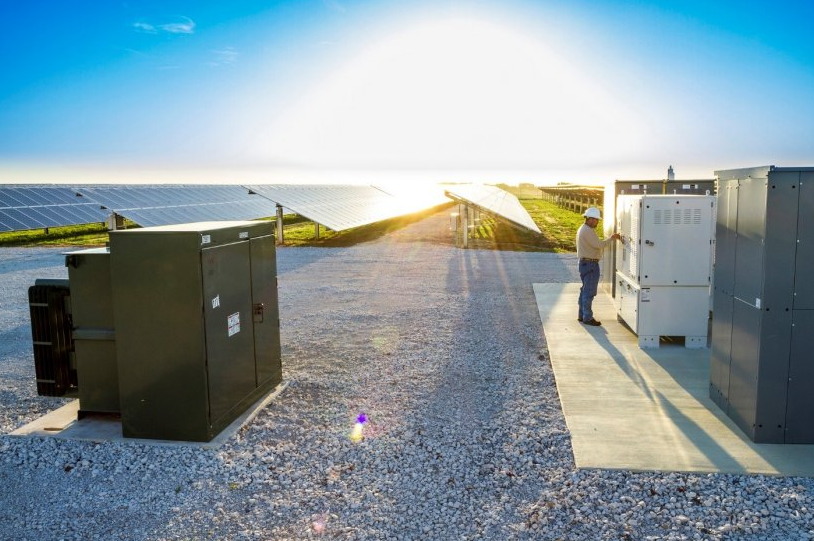
Solar inverters come in different types, each offering unique features and benefits suited for various applications. Understanding the different types of inverters is crucial when selecting the most suitable option for your solar energy system. Let’s explore these types in detail:
String inverters, also known as centralized inverters, are the most common and traditional types of solar power inverters. They operate by connecting multiple solar panels in a series, forming a string. The DC electricity generated by these panels is then fed into the string inverter, where it is converted into AC power for consumption or grid export.
String inverters are widely used in residential and small commercial solar installations. They are suitable for systems with unobstructed roof space, where shading or panel mismatch is not a significant concern. Understanding the specific requirements and limitations of string inverters helps in determining their suitability for your solar energy project.
Microinverters are an alternative type of solar power inverters that have gained popularity in recent years. Unlike string inverters, microinverters are installed at the individual panel level, directly beneath each solar panel. This decentralized approach allows for independent power conversion for each panel, offering several advantages over traditional string inverters.
Microinverters are particularly beneficial in situations where shading, panel mismatch, or complex roof configurations are present. They provide increased flexibility, system performance optimization, and enhanced safety. However, it’s important to assess the specific requirements and budget of your solar energy system to determine if microinverters are the right choice for your installation.
Power optimizers are another type of solar power inverter technology that offers an alternative approach to both string inverters and microinverters. Power optimizers work in conjunction with a centralized string inverter, providing advanced features to enhance the performance and efficiency of the solar energy system.
Power optimizers offer a middle ground between the traditional string inverters and microinverters. They provide panel-level monitoring and optimization while maintaining the benefits of a centralized inverter system. When considering power optimizers, it’s important to assess the specific requirements of your solar installation, including shading conditions, system size, and budget, to determine if power optimizers are the right fit for your needs.
Now that we’ve understood the types of solar inverters based on their technology, it’s crucial to know the types of inverters based on their connection to the power grid.There are three types of inverters: Grid-tied, Off-grid, and Hybrid. The choice among them depends mainly on whether your solar system is going to be connected to the power grid or not.
Grid-Tied Inverters: Grid-tied inverters are used in solar systems that are connected to the local electrical grid. These inverters convert the DC electricity from your solar panels into AC electricity, which can be used directly by your household appliances. If your system produces more electricity than your house can consume, the excess power is fed back into the grid, and you can receive credit for it – this is where net metering comes into play. Net metering is a billing mechanism that credits solar energy system owners for the electricity they add to the grid. For this to happen, your utility company must offer net metering, and you must have a grid-tied inverter installed. If there is a power outage, for safety reasons, grid-tied inverters are designed to shut off and stop exporting power to the grid to protect utility workers who might be repairing the grid.
Off-Grid Inverters: Off-grid inverters are used in solar systems that are not connected to the grid. These systems are often used in remote locations where access to the grid is either unavailable or too expensive to bring in. Off-grid inverters convert DC electricity from your solar panels into AC electricity for your home’s use, but because there’s no grid connection, excess power needs to be stored in batteries. Off-grid systems can’t benefit from net metering because there’s no connection to the grid to send back excess power.
Hybrid Inverters: Hybrid inverters combine the functionalities of both grid-tied and off-grid inverters. They can feed power into the grid (and therefore participate in net metering if it’s available) and can also store excess power in batteries for later use. Hybrid inverters can provide power to your home even during a grid outage by drawing stored energy from the batteries, making them a versatile solution for many solar system owners.
Selecting the right solar power inverter is crucial for maximizing the efficiency and performance of your solar energy system. White string inverters are the most commonly installed worldwide, it is not a one-size-fits-all scenario, as the right choice depends on your specific needs and circumstances. Here are some key factors to consider when choosing a solar power inverter:
System Size and Power Requirements: The size of your solar system and the amount of electricity you need to produce will influence the type and size of inverter you should choose. For instance, string inverters might be sufficient for small residential systems, while larger installations might require the use of multiple string inverters or the use of central inverters. Microinverters or power optimizers may be a good choice for systems with shading issues or complex roof layouts.
Grid Connection and Net Metering: If your utility offers net metering and you want to take advantage of this to offset your electricity bill, you’ll need a grid-tied or hybrid inverter. Off-grid inverters won’t allow you to feed power back into the grid.
Connection type: Consider the electrical infrastructure of your property. Determine whether you have a single-phase or three-phase power system. In a single-phase power system, the electricity is distributed through a two-wire system, commonly found in residential settings. In a three-phase power system, the electricity is distributed through a three-wire system, typically found in commercial and industrial environments. Three-phase systems offer higher power capacity and are more efficient for larger-scale installations.
System Expansion: If you plan to expand your solar energy system in the future, consider an inverter that can accommodate this growth. Some inverters allow for easy expansion, while others might require a complete replacement to accommodate more solar panels.
Budget: Your budget will also play a significant role in your decision. Traditional string inverters are generally more affordable upfront, making them a popular choice for smaller installations. In contrast, microinverters and power optimizers are typically more expensive, with microinverters often costing around $1,000 more for a standard 5 kW residential solar installation. However, the higher cost may be offset by the increased performance and energy yield in certain situations, particularly for installations dealing with shading issues or complex roof layouts. It’s important to consider both the initial investment and the potential long-term energy savings when selecting the type of inverter for your solar energy system.
Reliability and Warranty: The inverter’s durability and warranty terms are critical as it’s one of the most vital components of your solar energy system. A longer warranty often signifies a product of higher quality. For example, microinverters typically come with a 25-year warranty, reflecting the manufacturers’ confidence in their long-term reliability. This extensive warranty is an attractive feature despite the initial higher costs, which are typically around $1,000 more than a string inverter for a standard 5 kW residential solar installation. On the other hand, string inverters come with warranties ranging from 8 to 12 years, underlining the need for potentially earlier replacement.
Local Regulations and Grid Requirements: Local regulations and requirements set by your utility can influence the type of inverter you can use. Always check these before making a decision.
Solar inverters play a critical role in converting solar energy into usable electricity, but finding the right inverter can be quite a task. Here are some of the top solar inverters available on the market in 2023:
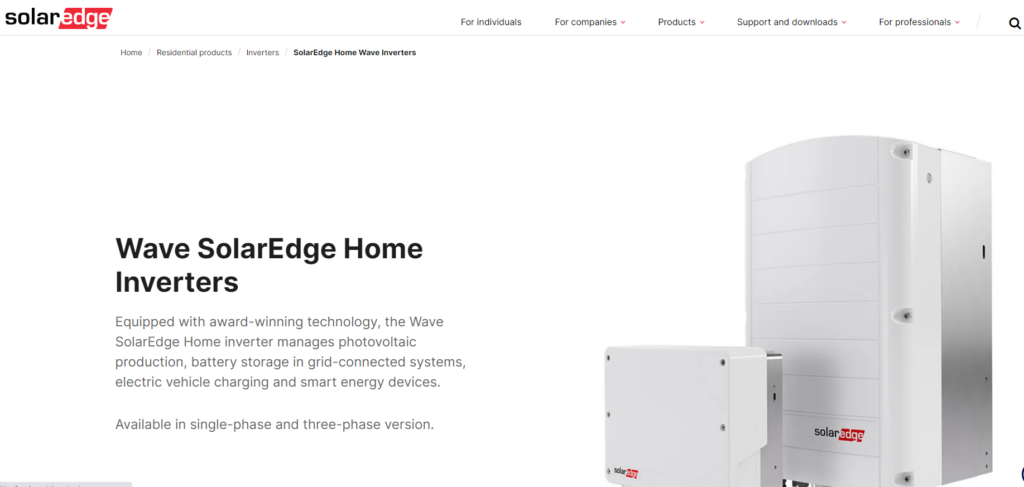
As the best overall inverter, the SolarEdge Home Wave Inverter is celebrated for its high efficiency ratings and user-friendly application. SolarEdge’s inverters have a California Energy Commission (CEC) efficiency rating of 99%, assuring that very little of your generated electricity will go to waste. These inverters come with a 12-year limited warranty, which can be extended up to 25 years.
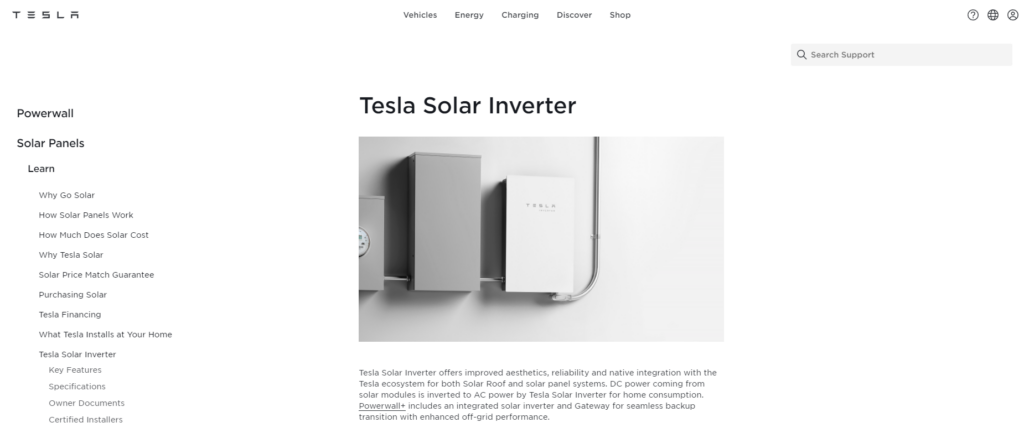
Tesla is well-known for its high-quality solar products, and their Solar Inverter doesn’t disappoint. It is available in two models – 3.8 kW and 7.6 kW – and comes with a 12.5-year warranty, one of the longest limited warranties available for string inverters. With a CEC efficiency rating of 98%, it offers good value for money.
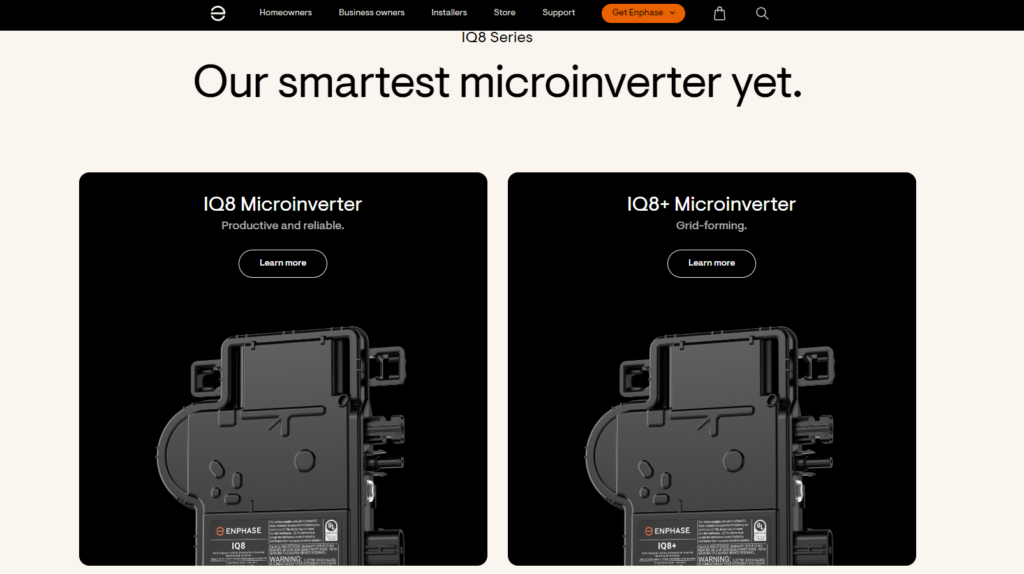
For those seeking the best microinverters on the market, Enphase’s IQ8 Series Microinverters are an excellent choice. They can function during grid outages and come with a generous 25-year warranty.

If you’re planning for solar storage in the future, Growatt’s hybrid inverters could be a perfect choice. Available in nine sizes from 3 kW to 11.4 kW, these inverters have a 97% to 98% for CEC efficiency. Their prices are also more competitive compared to other inverters, making them a cost-effective solution.
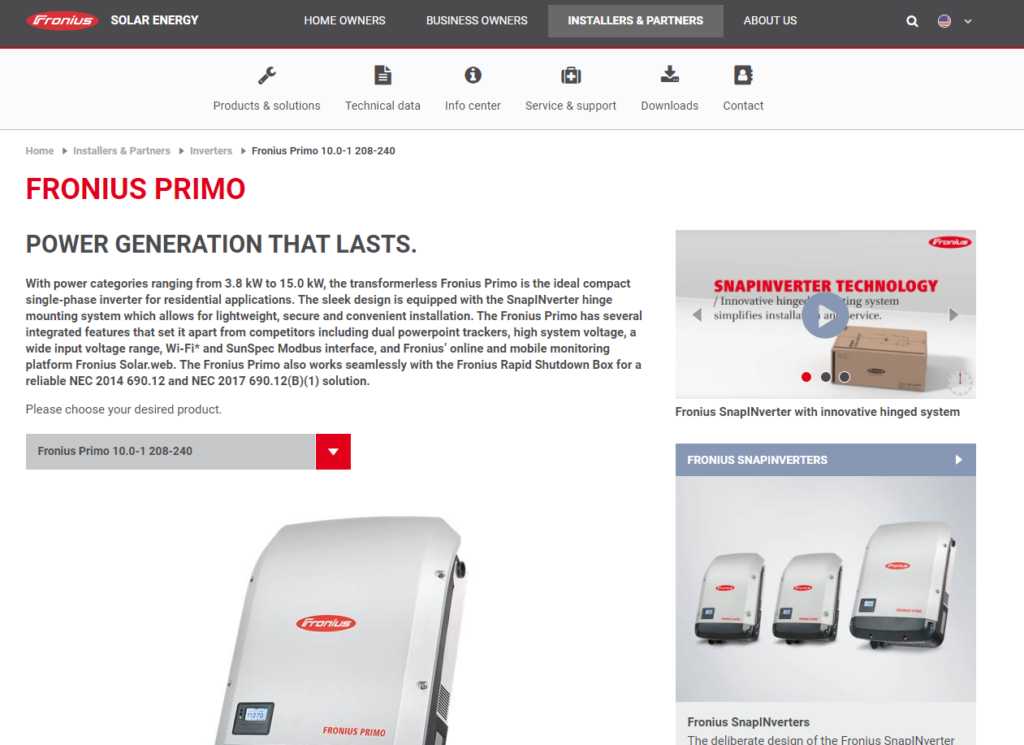
The Fronius Primo, manufactured in Austria, is well-regarded for its high performance, reliability, and superior customer support and comes with a CEC rating that ranges from 95.5% to 97%. One of its unique features is an integrated DC isolator switch, providing additional safety during installation and maintenance. This inverter also comes with a 10-year warranty to protect your investment in the long run.

The SMA Sunny Boy is another reliable and affordable string inverter option. Known for its high efficiency and reliability, the Sunny Boy comes with a built-in Wi-Fi module that allows easy monitoring of your solar system’s performance through your smartphone or tablet. Its compact and lightweight design makes it easy to install and maintain, and it also comes with a 10-year warranty to secure your investment.
Solar inverters are the pivotal devices that convert the direct current (DC) from your solar panels into alternating current (AC) usable by your home appliances. The type of inverter you choose can make a significant difference in your system’s functionality, longevity, and return on investment. There are various types of inverters: string inverters are cost-effective and work well for large, unshaded areas; microinverters, though more expensive, optimize each solar panel’s output individually, making them ideal for systems with potential shading issues; and hybrid inverters seamlessly integrate with solar battery storage systems, providing a versatile solution for future expansion. Moreover, the choice between single-phase and three-phase inverters is another important consideration, largely dependent on your grid connection and power requirements. Single-phase inverters are typically suitable for residential applications, while three-phase inverters cater more to commercial setups or homes with significant energy demand.
The lifespan of solar inverters can vary depending on the brand, quality, and usage. Generally, string inverters have a lifespan of around 10 to 15 years, while microinverters often come with warranties ranging from 15 to 25 years.
Solar panels generate electricity through the photovoltaic effect, which produces direct current (DC) electricity. DC is the natural output of solar panels because it matches the flow of electrons within the solar cells. However, the majority of homes and businesses use alternating current (AC) electricity, which is better suited for long-distance power transmission and compatibility with most electrical appliances. Solar inverters are used to convert the DC electricity from solar panels into AC electricity that can be used directly or fed into the electrical grid.
A string inverter is a type of solar inverter that is connected to multiple solar panels wired together in series, forming a string. It converts the DC electricity generated by the string of solar panels into AC electricity. In contrast, a microinverter is a smaller inverter attached to each individual solar panel in a system. Each microinverter converts the DC electricity produced by its corresponding solar panel into AC electricity. Microinverters offer advantages such as individual panel-level optimization, enhanced performance in shaded conditions, and increased system flexibility.
Stay a while and read more posts like this
In recent years, Europe has witnessed a remarkable surge in the adoption of solar panels, marking a pivotal shift towards renewable energy. Data from the...
Renewable Energy, Solar Energy, Solar Energy Basics, Solar Technology
“Unlock the Truth: Get the Facts on Solar Energy!” Introduction Solar energy is becoming increasingly popular as a renewable energy source, but there are...
Imagine a world where you’re able to cut your monthly energy expenditure substantially. A reality where your home isn’t reliant on finite,...